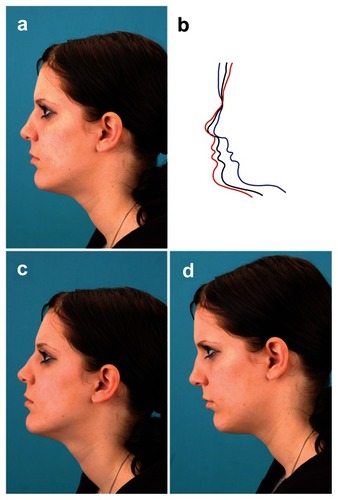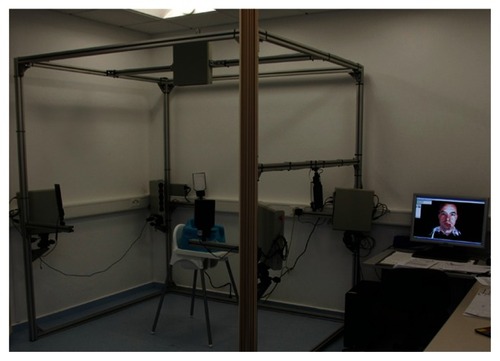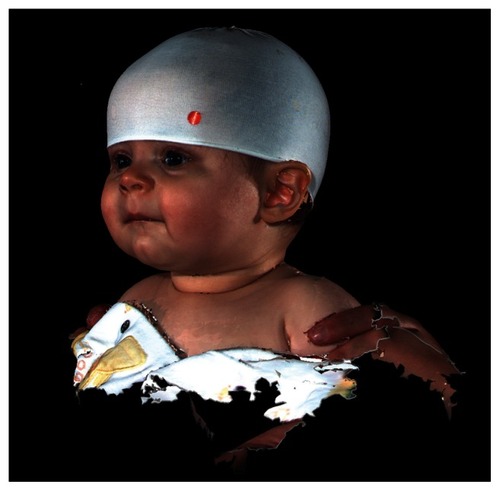Figures & data
Figure 1 Lateral view of an orthognatic patient with Angle Class 2. The pictures show markedly different profiles. a) Correct position of the patient; b) tracings of photographs a, c, and d; c) the head is bent backward and the Frankfort Horizontal Plane is not parallel to the ground, and the deformity is therefore underestimated; d) the head is bent forward and the deformity is exaggerated.



